Sharing the story of Paul McGinness at 2024 Anzac Day Assembly
May 8, 2024
The amazing story of Old Collegian Paul McGinness DCM DFC (SPC 1910-11) was shared with students and staff at the College’s 2024 Anzac Day Assembly.
A boarder at SPC in the early 1900s, who became a decorated war fighter pilot ace and then a co-founder of Qantas in later life, Paul McGinness’ war story was the focus of the College’s annual commemorative assembly, held on Friday 26 April 2024.
We invite you to read the story of this Old Collegian’s efforts for his country below. Lest We Forget.
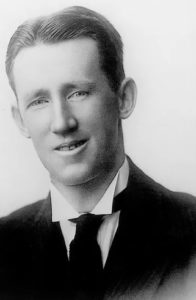
Paul McGinness DCM DFC.
Paul McGinness DCM DFC
Anzac Day is an important event on the Australian calendar. It is an opportunity for all Australians to pause and reflect on the sacrifice of those who went before us. The First World War, known as the Great War, was fought between 1914 and 1918.
When Britain declared war on the Central Powers: Germany, the Austria Hungary Empire and the Ottoman Empire on the 4th of August 1914 the fledgling nation of Australia responded to the call. Future Prime Minister Andrew Fisher pledged that we would support Britain “to the last man and the last shilling”. By war’s end we had certainly fulfilled our end of that bargain, overall, 324,000 members served overseas with the Australian Imperial Force (AIF). As the Australian War Memorial states, for Australia, the First World War remains our most costly conflict in terms of deaths and casualties. From a population of fewer than five million, 416,809 men signed up to the Australian Imperial Force and the Royal Australian Navy (RAN), while 2,100 women served with the Australian Army Nursing Service and 130 with the Queen Alexandra Imperial Military Nursing Service. Of this number over 60,000 were killed and 156,000 wounded, gassed, or taken prisoner.
Australia also had the dubious distinction of suffering the highest proportional losses of any of the national forces within the British Empire. The casualties were still being counted during the 1930s. By then, another 60,000 had died from wounds or illnesses caused by the war.
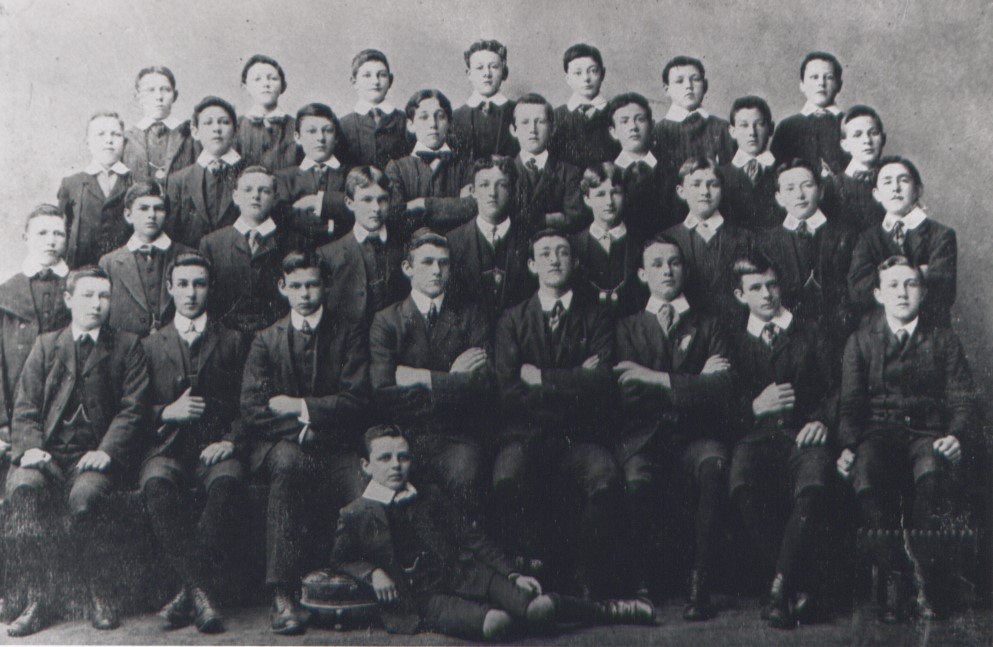
St Patrick’s College Ballarat – Victoria Paul McGinness, pictured seated in the second row, fourth from the right, at SPC in 1911.
During this time many St Patrick’s College students signed up and fought in the conflict. One such young man was Paul McGinness. Paul attended SPC in 1910 and 1911, hailing from Framlingham in the Victoria’s southwest.
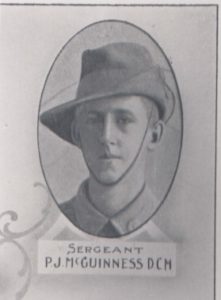
Paul McGinness.
When the war started, he heard his nation’s call and joined the Australian Imperial Force. His attestation papers commented that he was ‘able to ride and shoot at the same time’ and soon after found himself as part of the 8th Light Horse Regiment training in Egypt.
On the 20th of May 1915 he landed at Gallipoli and on the 14th of August he was one of only two survivors from the 150 from his regiment who were part of the first wave of the attack on Walker’s Ridge.
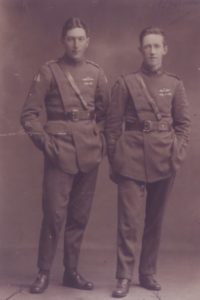
Paul McGinness, pictured right, with Hudson Fysh. Note the Service Chevrons on the right sleeve of each man. Fysh has four and McGinness has five. Both are lieutenants – McGinness is the senior office by longer service.
From the St Patrick’s College Annual of 1916/17:
‘My escape was miraculous: the bullets were falling like hail. I don’t know how I got back. My guardian angel must have been very close to me, and someone praying very hard for me.
… He had succeeded in gaining the brink of the Turkish trench when he was knocked over by a bullet that, while causing very little discomfort, left him incapacitated.
By good fortune he managed to creep away unnoticed after dark and regain the spot from which he had jumped at dawn. Questioned as to his feelings during the hours of thirst and starvation under the broiling sun, the trooper said: – I kept my mind employed so that I would not worry. I counted and counted all day, and once I reached seven thousand odd and got off the track, so then I simply numbered off single hundreds. I realised what a prisoner escaping from gaol must feel like when I started back from the line. Bullets seemed to buzz around like mosquitoes.
Following this Paul was evacuated to Alexandria in Egypt for hospital treatment.
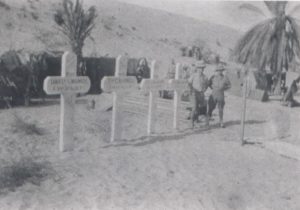
Paul McGinness and Lionel Simpson, pictured next to crosses made ready for mate’s graves in Palestine.
At the end of December 1915, the now Sergeant McGinness returned to service, marching out to Serapeum on the Suez Canal 26 February 1916.
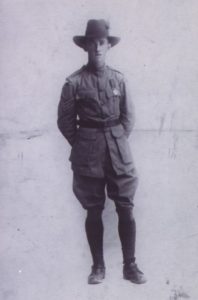
Sgt Paul McGinness, D.C.M. This decoration was for action taken in Gallipoli. The medal was not presented until after actions taken in Egypt and incorrectly assumed by many to be for action in Egypt.
On 13th April 1916 he was awarded a Distinguished Conduct Medal on the Sinai Peninsula, for conspicuous galantry, good scouting and leadership of his troop in action during the operations at Bir El Jifjafa.’
Ever the adventurer, McGinnis then undertook pilot training, graduating as a fighter pilot on 21 October 1917 and was appointed 2nd Lieutenant, 67th Squadron Australian Flying Corps, at Moascar.
He served briefly with a Royal Flying Corps unit attached to Colonel T E Lawrence (Lawrence of Arabia).
McGinness’ courage and daring in action earned him a Distinguished Flying Cross. According to the Commonwealth Gazette in May 1919:
A bold and gallant airman, who displayed marked initiative and skill in attacking and destroying enemy aircraft, notably on 24th of August, when with his observer, he crashed two enemy machines in an engagement against heavy odds.
He also carried out successful attacks on enemy aerodromes inflicting heavy casualties and causing serious damage.
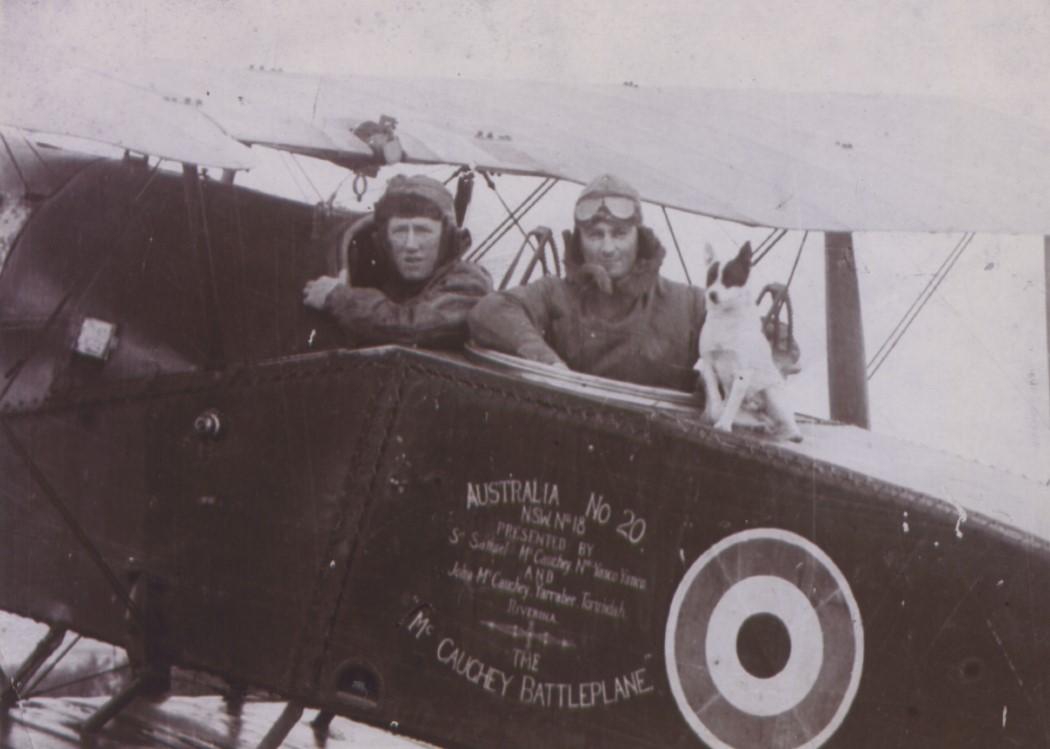
Paul McGinness pictured as the pilot and Hudson Fysh, gunner, in a Bristol Fighter. Note the mounting for the double set of Lewis Guns to revolve on.
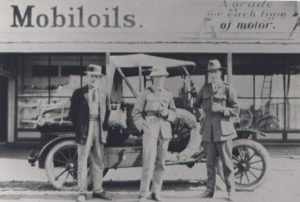
From Left, George Gorham (driver), Paul McGinness and Hudson Fysh in front of a Model ‘T’ Ford Utility at Longreach on 18 August 1919.
With seven confirmed victories, he became one of the few recognised air aces in Palestine. Hudson Fysh was one of those who flew as his gunner.
After more than four years of outstanding service, Squadron Leader Paul McGinness left Cairo for his return to Australia aboard the troop carrier Port Sydney on 5 March 1919.
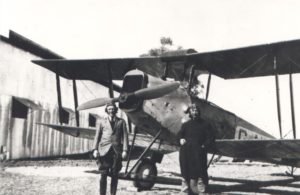
Captain Johnston with Paul McGinness, standing left, in front of a Avro Dyak plane utside Hangers at Longreach.
Upon his return to Australia, Paul McGinness with his friend and former tail gunner, Hudson Fysh, planned to enter the Australian government’s £10,000 contest for a flight from England to Australia.
This did not go ahead due to the death of their financial backer, so instead, McGinness and Fysh were commissioned by the Australian Government to survey the Longreach (Qld)-Darwin section of the route.
On 16 November 1920, McGinness and Fysh, with consortium of western Queensland graziers, formed the Queensland & Northern Territory Aerial Services Ltd – QANTAS. The company lobbied the government for a regular Charleville-Cloncurry passenger service. On 2 November 1922, Qantas flew its first passenger, 87-year-old Alexander Kennedy, in one of two surplus war aircraft that they had purchased from the Australian Government.
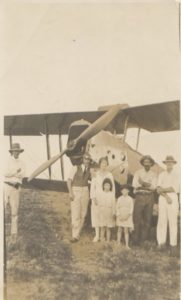
Paul McGinness, pictured in the flying helmet.
Paul McGinness left Qantas at the end of 1922 after a falling-out with Hudson Fysh, and moved to Western Australia where he married Dorothy Maud in 1924. They had two children.
Paul joined the military again at the outbreak of World War 2 War II he served in the Royal Australian Air Force in administrative jobs including a period in New Guinea at Milne Bay as a Directorate of Air Transport Control Officer but he returned home suffering ill health.
Paul died in July 1952 at the age of 55.
Hudson Fysh wrote this tribute to his former friend and colleague, read here
In 2008, Qantas Airways honoured him by naming one of its new Airbus A380 super jumbo jets the Paul McGinness in his honour and in 2013 he was inducted into the Australian Aviation Hall of Fame. A fitting tribute to a great man of St Patrick’s College Ballarat.
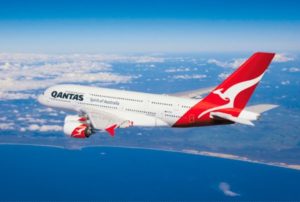
A QANTAS A380 Airbus was named in his honour.
Paul McGenniss’ early life
Paul McGinness was born on February 4, 1896, and spent his childhood on the family property in Framlingham called ‘Riverview.’ He was the youngest among his ten siblings and grew up in a close-knit community where neighbours interacted, visited, and knew each other personally. This was when people were more connected to their local communities, unlike today’s world, where social media dominates, and there is less emphasis on building personal relationships with those around us.
Everyone went to church; if you didn’t, it was considered unusual.
Paul’s father, James, was occupied with running a dairy farm, breeding animals, and transporting milk and cream to a butter factory in Framlingham. Meanwhile, Paul’s mother, Catherine, nurtured the children and managed the household. The children enjoyed the spacious surroundings, riding horses, and playing games like chasing stagecoaches. Paul, in particular, was known for his mischievous behaviour – he would often play pranks like leaving dead snakes on people’s doorsteps or stealing pastries from the kitchen staff, such as Ah Fong.
Paul developed a keen interest in flying at a young age after witnessing a display of Hargraves Box Kites in Geelong. The experience ignited his imagination, and he soon began attempting to fly by creating his wings out of feathers and upturned umbrellas. He even tried to float using a bed sheet. Paul was known for being a leader rather than a follower, often getting himself and others into trouble. His mother was constantly worried that he would seriously injure himself.
In 1910, Paul was told he would attend St Patrick’s College, a Christian Brothers College in Ballarat. His two other brothers, James and Ignatius, and other relatives were educated at the College. It was said that the College would cure Paul of his wild ways.
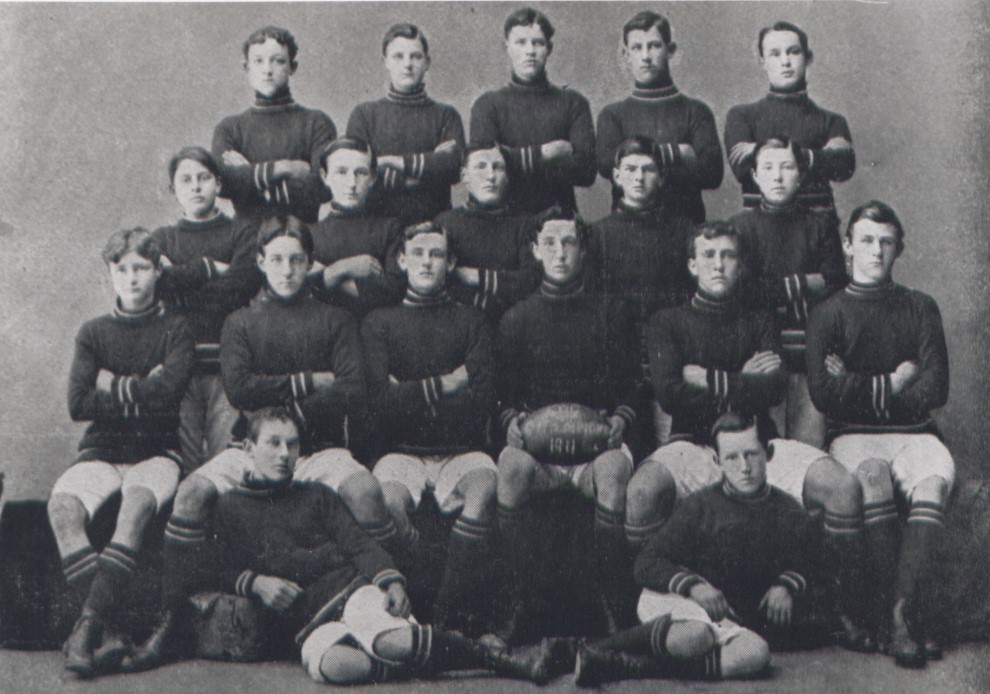
Paul McGinness, pictured front right, in the SPC 2nd XVIII Champions, in 1911.
With an enrolment of 158, Paul was one of 105 boarders in 1910. Surprisingly, Paul adapted well to the new school environment with his peers and a few cousins. He loved outdoor activities with the introduction of handball, and he played in the 2nd XVIII Football in 1911, winning the interschool championship. He played cricket being selected for the First XI.
Paul McGinness recalls one of the year’s highlights, St Patrick’s Day, a significant celebration for the school and the community of Ballarat. This public holiday event involved various activities, including a procession along Sturt Street. During the procession, crowds would wave flags while the St Patrick’s College boys, adorned with green sashes and various green pieces of cloth pinned to their coats, would march.
Paul performed well in his general classwork and was ranked in the top third of his class. However, despite making efforts to improve, he struggled with spelling throughout his life. He left St Patrick’s College after completing two years of schooling but remained in touch with the Christian Brothers, who had taught him until 1937.
Paul was described as having learned kindness, politeness, a sense of fair play and patriotism, and appreciation of his world and the people for not what they owned but who they were. He had a great sense of humour, quick dry wit, and a ‘storm in a teacup’ temper. He was well-liked when you first met him, and a tremendous sense of fun exuded him.
Paul McGinness had grown into an exemplary young man who would soon face War like many others.
Research from the publication, “The Man Australia Forgot” by Pauline Cottrill, daughter of Paul McGinness.
Thanks also to John Richards and Halina Sztynda for their help with this story

